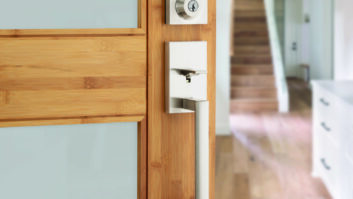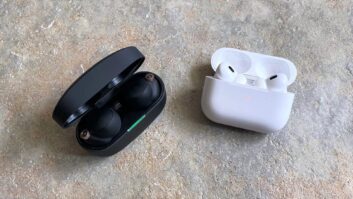TOKYO -Aiwa Co. outlined a dramatic restructuring in which it will close eight of nine factories, outsource some of its production to contract manufacturers, and reduce its work force to 5,000 from about 10,000 during the fiscal year that began yesterday.
To support its sagging finances, Aiwa plans to issue about $243 million in new shares. Sony, which owns 50.6 percent of Aiwa, will take about half the shares.
Aiwa will also “strengthen its technological ties with Sony Corp. to promote new product groups,” the company said in a written statement. In another sign of closer ties with Sony, Japan press reports said the restructuring will be led by six Sony executives beginning April 1. They will join president Masayoshi Morimoto, who joined Aiwa in January after serving as an executive VP with Sony.
The eight factories, including two of Aiwa’s three principle factories, will be closed by March 2002. Unconfirmed Japan press reports said some production would be outsourced to factories in China and to a new Sony subsidiary to be set up in April.
The companies’ three main factories are in Japan, Malaysia and Indonesia. They are fed by the other Aiwa-owned factories, including one in Wales. The company didn’t say which of the three principle factories would remain open.
Aiwa already outsources some production in China, a spokesman confirmed.
About 4,500 of the work force reductions will occur in the closed factories. The company also said it “anticipates a reduction of about 30 percent in the number of employees at Aiwa’s corporate headquarters and sales companies,” of which one is Aiwa America. These reductions will follow a reduction of about 900 companywide during the past year.
Additional details of the restructuring will be announced April 26, when the company issues its financials for the fiscal year ending March 31, 2001.
Asked about the restructuring’s impact on Aiwa’s U.S. sales and marketing arm, Aiwa America marketing general manager Eileen Toomey said in a written statement, “There are no immediate plans for layoffs in the U.S. as part of the recently announced parent-company restructuring.”
The announcements mark a rapid acceleration of the company’s restructuring, begun last year after Aiwa revealed that it expected to post its second consecutive annual loss in the year ending March 31, 2001. For the year ending March 2000, the company incurred an operating loss of $108 million on sales of about $2.69 billion. And earlier this year, Aiwa said it expected a net loss of $318 million for the fiscal year ending March 31, 2001, Tokyo news reports said at the time.
Aiwa said it hopes to become profitable by the year ending March 31, 2003.
In a written statement, the company also said it “will withdraw from unprofitable product groups, including some products that it had planned to develop and market in fiscal 2001 in order to focus management resources on profitable operations.” An Aiwa America spokesman, however, cited a translation error in the statement and said the parent company intends only to delete unprofitable models from this year’s selection, “not withdraw entirely from any single product category.”
In fact, the spokesman said, in the United States, Aiwa America will not drop a single SKU that it has already announced for its 2001-model lineup.
Aiwa executives will meet this week in Japan to pare the product selection.
The new strategy “marks a departure from the previous policy of seeking to improve earnings by increasing sales,” Aiwa’s statement said. As a result, worldwide sales will be trimmed by about 30 percent in the fiscal year ending March 2002 to about $1.72 billion.
Aiwa attributed its continuing losses to weak demand, “ever-intensifying price-cutting due to competition,” and what it called the “sluggish” U.S. economy.
In the United States, marketers said, Aiwa suffered from competition from low-price China factories, eroding a feature/price advantage it held for years because of a strategy, born in the strong-yen years of the 1980s, to aggressively move most of its production out of Japan to lower-cost Far East countries. Since then, competitors have leapfrogged Aiwa by moving much or all of their production of shelf systems and portable audio to China, where costs are even lower.
Until “very recently,” Aiwa America president Hideki Tafuku told TWICE earlier this year, about 80 percent of Aiwa’s volume was produced outside Japan.













